There is evidence at Western Park of possibly Leicester’s earliest occupation. What is believed to be an early Bronze Age henge site and burial mounds have been discovered there along with evidence of Roman occupation as well.
- Created to provide a healthy green space for the nearby residents, many of whom lived in cramped slums in the 1880s
- Opened by the Prince of Wales (the future King Edward VII) in 1882
- Named after Leicester Abbey, the ruins of which are located inside the park
From soggy marsh to historic park
Today the grounds of Abbey Park consist of green and pleasant spaces but during the 18th century the area was a damp and dingy marshland that was frequently flooded by the nearby River Soar. The introduction of Leicester Navigation Canal in 1791 helped reduce the effects of flooding, however the entire area remained a swamp even after people began to move and settle on the surrounding land.
Conditions for these residents, drawn to the area by work at the canal’s wharfs and warehouses, were grim even by 19th century standards. The density of the population settling in Belgrave Gate as well as their lack of access to open spaces and recreation grounds made many people’s lives both difficult and dirty. Concerns over public health were raised in the 1870s when it became apparent that the frequent flooding was causing sewage to contaminate the local water supply. The crowded Belgrave Gate desperately needed a healthy green space.
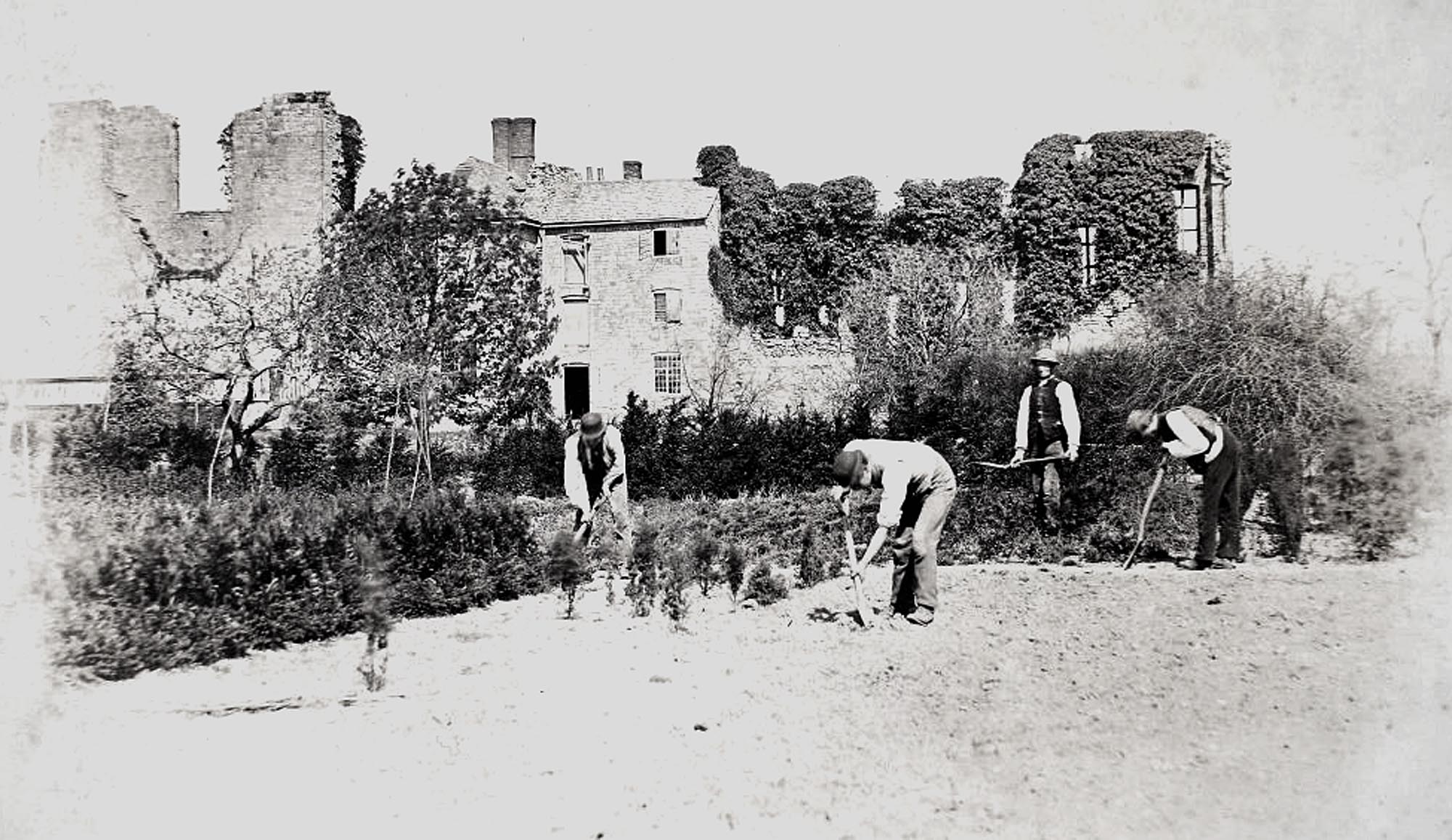
A royal blessing
In 1879 the Leicester Corporation purchased Abbey Meadows from the Earl of Dysart as part of the Leicester Improvement Act and solved the issue of flooding by widening the river and lowering the riverbed. One stipulation for the sale of the Meadows to the corporation was that it should later become ‘a public park or recreation ground for the enjoyment of the inhabitants of Leicester’. The Leicester Corporation created a competition to design the layout of the park which was won by the Derby-based firm Barron and Son in 1877.
The project faced much public scepticism, with fears that the site would be so waterlogged that boats would be required to get across it during winter. Despite concerns, the project was completed within schedule and budget with the project culminating in a royal opening. The Prince of Wales and future King, Edward VII, along with his wife the Princess of Wales, were invited to officially open the park on Whit Monday, 1882. The ceremony itself was an event of much pomp and circumstance, with £3000 worth of subscriptions raised to decorate the royal procession route from Leicester Station to Belgrave Gate. Thousands turned up to celebrate the event, lining the route from the Railway Station to Abbey Park
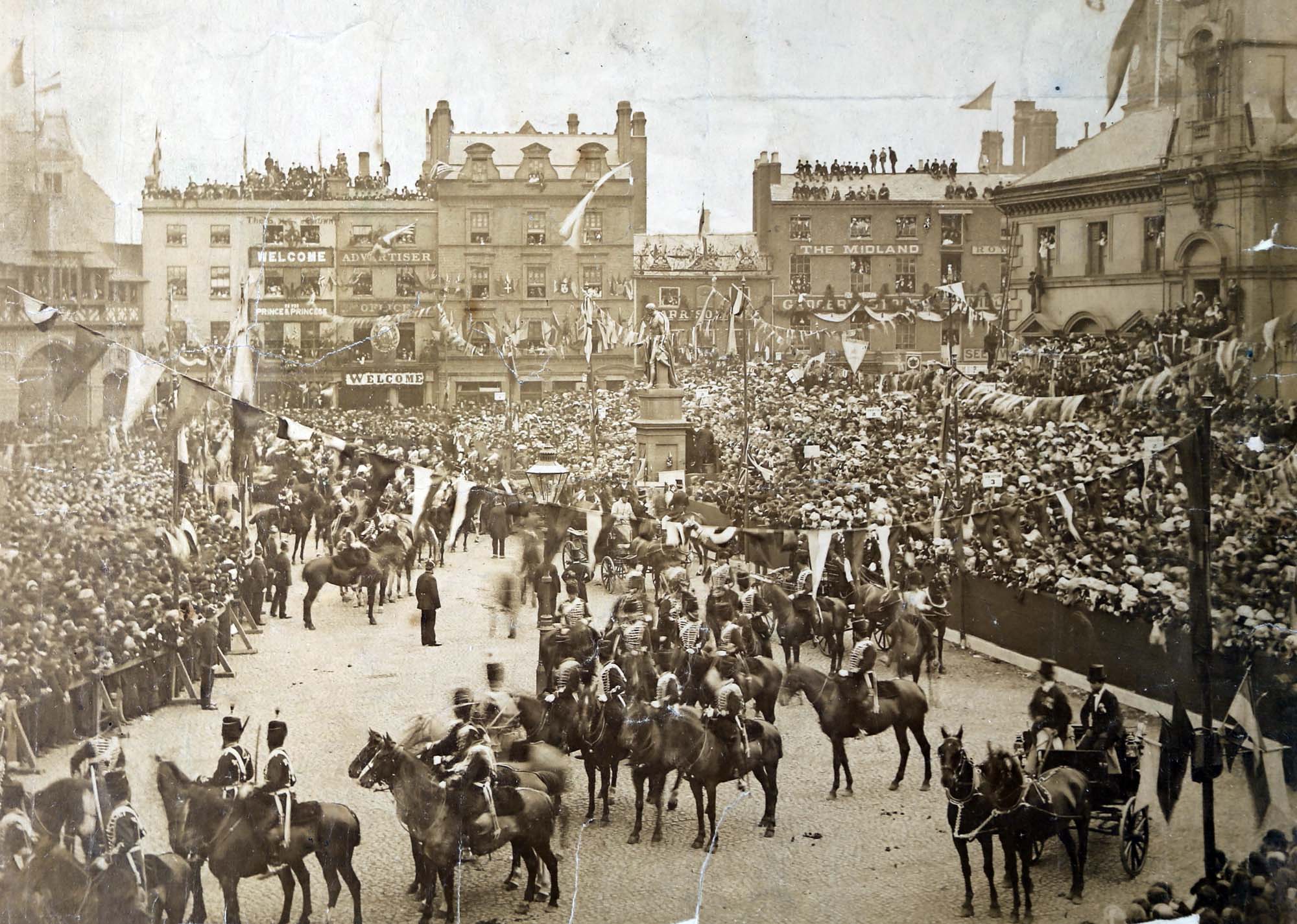
Whit Monday was also Royal Oak Day; a celebration of Charles II’s escape from the Roundhead Army by hiding in an oak tree in 1651. The Princess of Wales was therefore invited to plant a young Oak tree in the park and was presented with an elaborate silver and ivory spade by the Ladies of Leicester. Much to the surprise of all present, the Prince of Wales also joined in the ceremony using an ordinary workman’s spade. The ‘People’s Park’ of Leicester was now officially open to all.
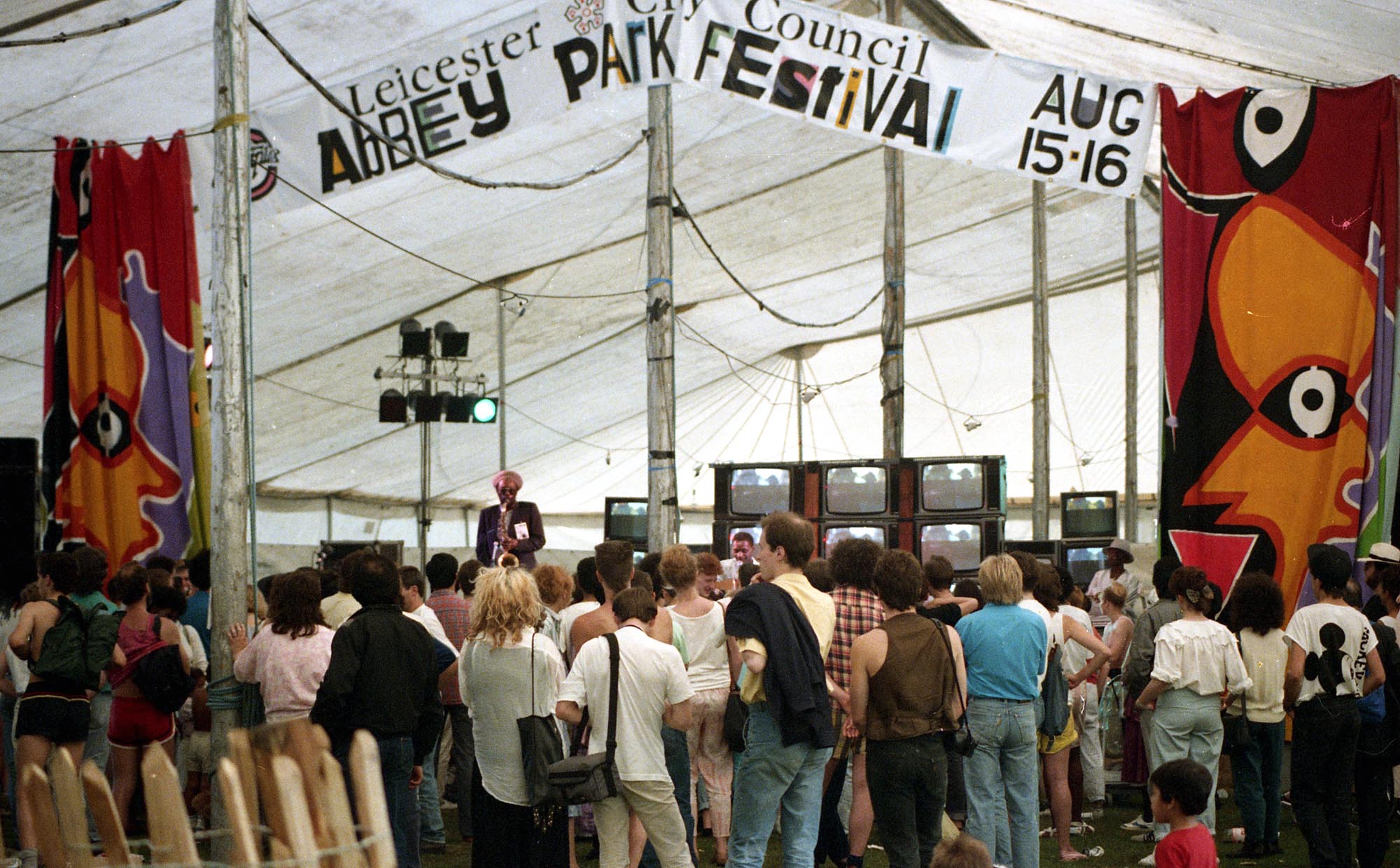
Something to see all year round
The park itself would have looked somewhat different to its present iteration with original features, such as the American Garden and the Pavilion (lost to fire in 1959), no longer part of the current landscape. Another iconic feature of the 19th century Park was the City of Leicester Show which was designed to celebrate of the park’s horticultural splendour and was recognised as one of the best provincial shows in the UK.
In the 1980s the park also hosted the popular Abbey Park Festival which showcased the best local bands and music as well as acts from further afield. The annual Abbey Park Bonfire and Fireworks Display draws crowds of 1000s every year.
Today a visitor to Abbey Park can enjoy a variety of activities such as the boating lake, miniature railway, animal corner, exploring the ruins of Leicester Abbey and various playgrounds for children young or old.
Gallery
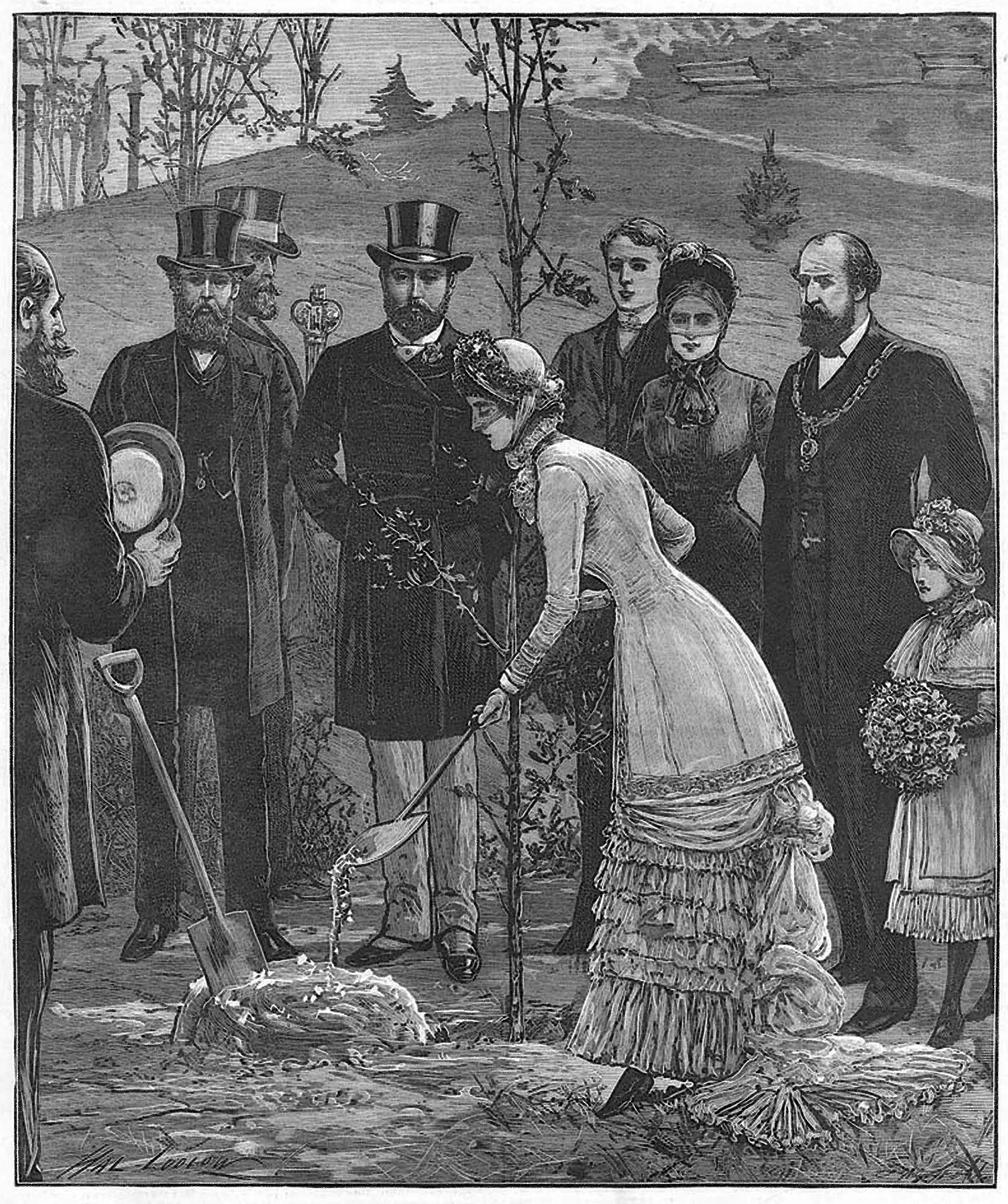
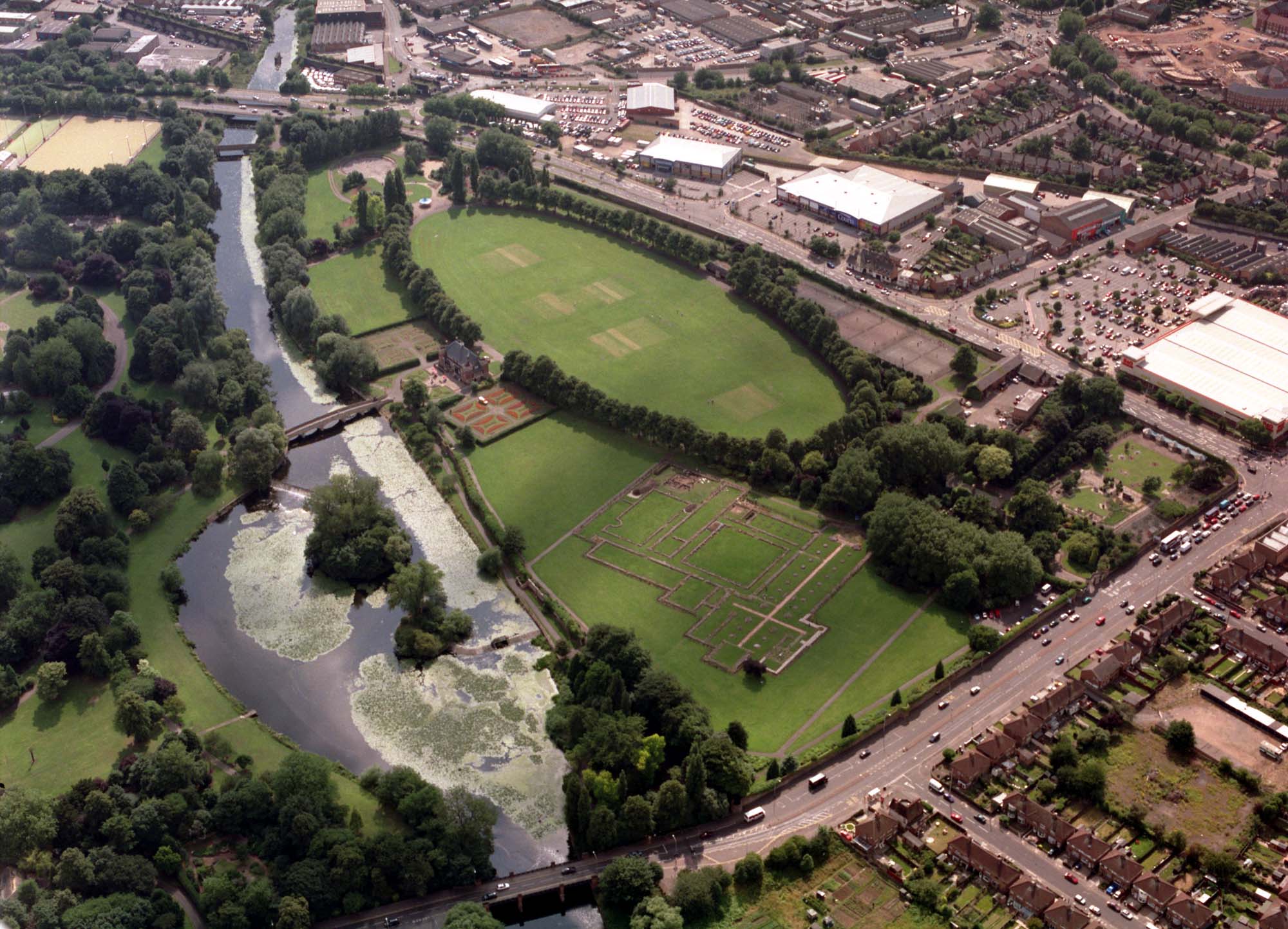
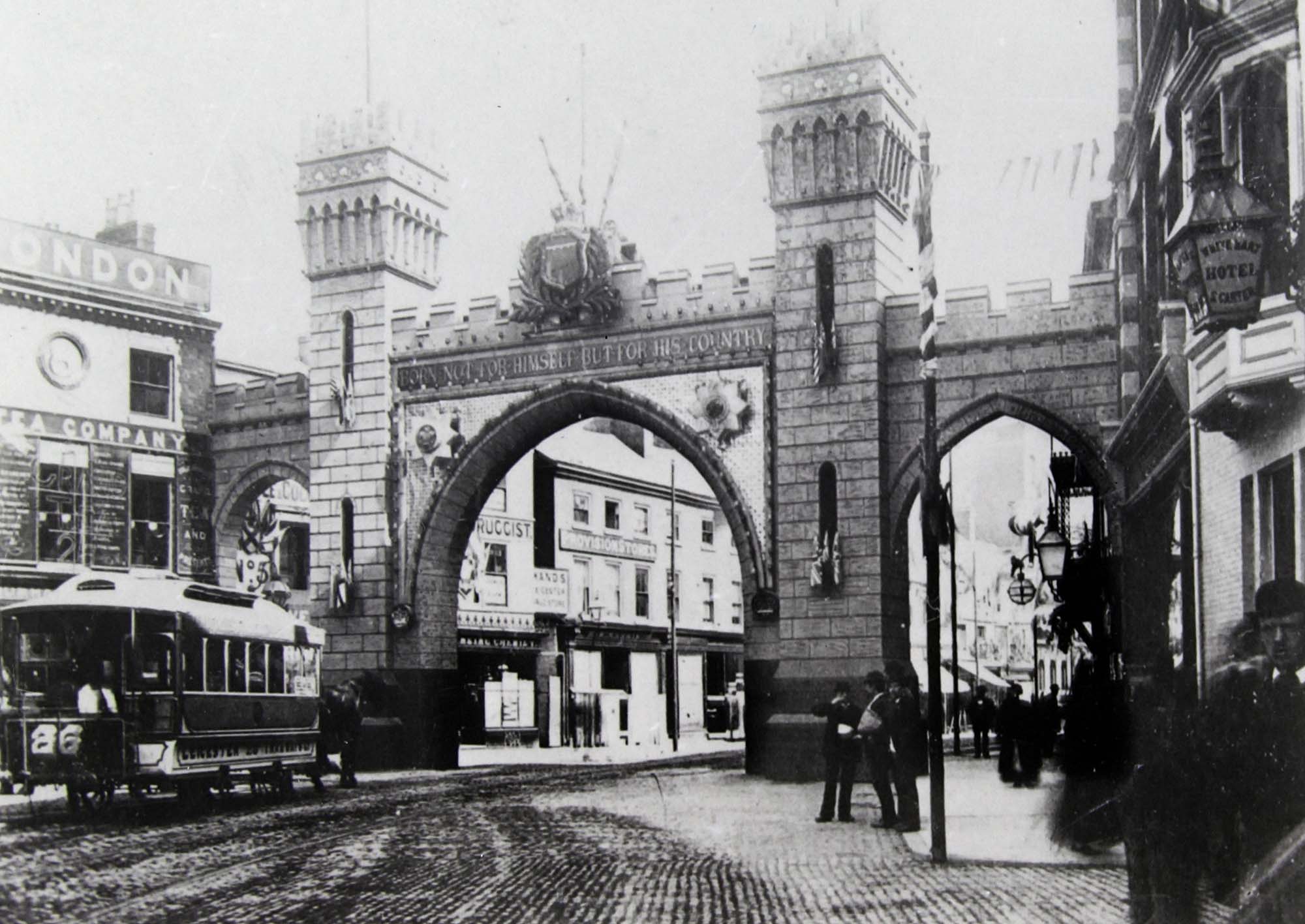
Leicestershire Record Office


Leicestershire Record Office

Leisure & Entertainment
Roman Leicester
(47- 500) A military fort was erected, attracting traders and a growing civilian community to Leicester (known as Ratae Corieltauvorum to the Romans). The town steadily grew throughout the reign of the Romans.
Medieval Leicester
(500 – 1500) The early years of this period was one of unrest with Saxon, Danes and Norman invaders having their influences over the town. Later, of course, came Richard III and the final battle of the Wars of the Roses was fought on Leicester’s doorstep.
-
The Castle Motte1068

-
Leicester Cathedral1086

-
St Mary de Castro1107

-
Leicester Abbey1138

-
Leicester Castle1150

-
Grey Friars1231

-
The Streets of Medieval Leicester1265

-
Leicester Market1298

-
Trinity Hospital and Chapel1330

-
Bow Bridgecirca 1350

-
Church of the Annunciation1353

-
John O’Gaunt’s Cellar1361

-
St John's Stone1381

-
Leicester Guildhall1390

-
The Magazine1400

-
The Blue Boar Inn1400

-
The High Cross1577

Tudor & Stuart Leicester
(1500 – 1700) The wool trade flourished in Leicester with one local, a former mayor named William Wigston, making his fortune. During the English Civil War a bloody battle was fought as the forces of King Charles I laid siege to the town.
Georgian Leicester
(1700 – 1837) The knitting industry had really stared to take hold and Leicester was fast becoming the main centre of hosiery manufacture in Britain. This new prosperity was reflected throughout the town with broader, paved streets lined with elegant brick buildings and genteel residences.
-
Great Meeting Unitarian Chapel1708

-
The Globe1720

-
17 Friar Lane1759

-
Black Annis and Dane Hills1764

-
Leicester Royal Infirmary1771

-
New Walk1785

-
Freemasons’ Hall1790

-
Gaols in the City1791

-
Friars Mill1794

-
City Rooms1800

-
Development of Highfields1800

-
Wesleyan Chapel1815

-
20 Glebe Street1820

-
Charles Street Baptist Chapel1830

-
Glenfield Tunnel1832

-
James Cook1832

Victorian Leicester
(1837 – 1901) The industrial revolution had a huge effect on Leicester resulting in the population growing from 40,000 to 212,000 during this period. Many of Leicester's most iconic buildings were erected during this time as wealthy Victorians made their mark on the town.
-
Leicester Union Workhouse1839

-
Campbell Street and London Road Railway Stations1840

-
The Vulcan Works1842

-
Belvoir Street Chapel1845

-
Welford Road Cemetery1849

-
Leicester Museum & Art Gallery1849

-
King Street1850

-
Cook’s Temperance Hall & Hotel1853

-
Amos Sherriff1856

-
Weighbridge Toll Collector’s House1860

-
4 Belmont Villas1862

-
Top Hat Terrace1864

-
Corah and Sons - St Margaret's Works1865

-
Kirby & West Dairy1865

-
The Clock Tower1868

-
Wimbledon Works1870

-
The Leicestershire Banking Company1871

-
St Mark’s Church and School1872

-
Victorian Turkish Baths1872

-
The Town Hall1876

-
Central Fire Stations1876

-
Aylestone Road Gas Works and Gas Museum1879

-
Gas Workers Cottages1879

-
Leicestershire County Cricket Club1879

-
Welford Road Tigers Rugby Club1880

-
Secular Hall1881

-
Development of Highfields1800

-
Abbey Park1881

-
Abbey Park Buildings1881

-
Victoria Park and Lutyens War Memorial1883

-
Leicester Fosse FC 18841884

-
Leicester Coffee and Cocoa Company Coffee Houses1885

-
St Barnabas Church and Vicarage1886

-
Abbey Pumping Station1891

-
Luke Turner & Co. Ltd.1893

-
West Bridge Station1893

-
Thomas Cook Building1894

-
The White House1896

-
Alexandra House1897

-
Leicester Boys Club1897

-
Grand Hotel and General Newsroom1898

-
Highfield Street Synagogue1898

-
Western Park1899

-
Asfordby Street Police Station1899

-
Leicester Central Railway Station1899

Edwardian Leicester
(1901 – 1910) Electric trams came to the streets of Leicester and increased literacy among the citizens led to many becoming politicised. The famous 1905 ‘March of the Unemployed to London’ left from Leicester market when 30,000 people came to witness the historic event.
-
YMCA Building1900

-
The Palace Theatre1901

-
Pares's Bank1901

-
Coronation Buildings1902

-
Halfords1902

-
High Street1904

-
George Biddles and Leicester's Boxing Heritage1904

-
Municipal Library1905

-
Leicester Boys Club1897

-
The Marquis Wellington1907

-
Guild Hall Colton Street1909

-
Women's Social and Political Union Shop1910

-
Turkey Café1901

Early 20th Century Leicester
(1910 – 1973) The diverse industrial base meant Leicester was able to cope with the economic challenges of the 1920s and 1930s. New light engineering businesses, such as typewriter and scientific instrument making, complemented the more traditional industries of hosiery and footwear manufacturing.
-
Dryad Handicrafts1912

-
De Montfort Hall1913

-
Leicester During the First World War1914

-
Fox’s Glacier Mints1918

-
Statue of Liberty1919

-
Housing in Saffron Lane1924

-
Winstanley House1925

-
Housing in North Braunstone1926

-
Lancaster Road Fire Station1927

-
The Little Theatre1930

-
Saffron Hill Cemetery1931

-
Braunstone Hall Junior School1932

-
Former City Police Headquarters1933

-
Savoy Cinema1937

-
Eliane Sophie Plewman1937
-
City Hall1938

-
Athena - The Odeon Cinema1938

-
The Blitz in Highfields1940

-
Freeman, Hardy and Willis - Leicester Blitz1940

-
Leicester Airport1942

-
Leicester’s Windrush Generations1948

-
Netherhall Estate1950
-
Housing at Eyres Monsell1951

-
Silver Street and The Lanes1960

-
Bostik1960

-
Auto-Magic Car Park (Lee Circle)1961

-
University of Leicester Engineering Building1963

-
Sue Townsend Theatre1963

-
Central Mosque1968

-
Belgrave Flyover1973

Modern Leicester
(1973 – present day) Industry was still thriving in the city during the 1970s, with the work opportunities attracting many immigrants from all over the world. While industry has declined in recent years, excellent transport links have made Leicester an attractive centre for many businesses. The City now has much to be proud of including its sporting achievements and the richness of its cultural heritage and diversity.
-
Haymarket Theatre1973

-
The Golden Mile1974

-
Acting Up Against AIDS1976

-
Belgrave Neighbourhood Centre1977

-
Diwali in Leicester1983

-
Leicester Caribbean Carnival1985

-
Samworth Brothers1986

-
Jain Centre1988

-
Guru Nanak Dev Ji Gurdwara1989

-
King Power Stadium2002

-
LCB Depot2004

-
Curve2008

-
BAPS Shri Swaminarayan Mandir2011

-
Makers Yard2012

-
VJ Day 80th Anniversary2020

- Roman Leicester
- Medieval Leicester
- Tudor & Stuart Leicester
- Georgian Leicester
- Victorian Leicester
- Edwardian Leicester
- Early 20th Century Leicester
- Modern Leicester
















































































































































